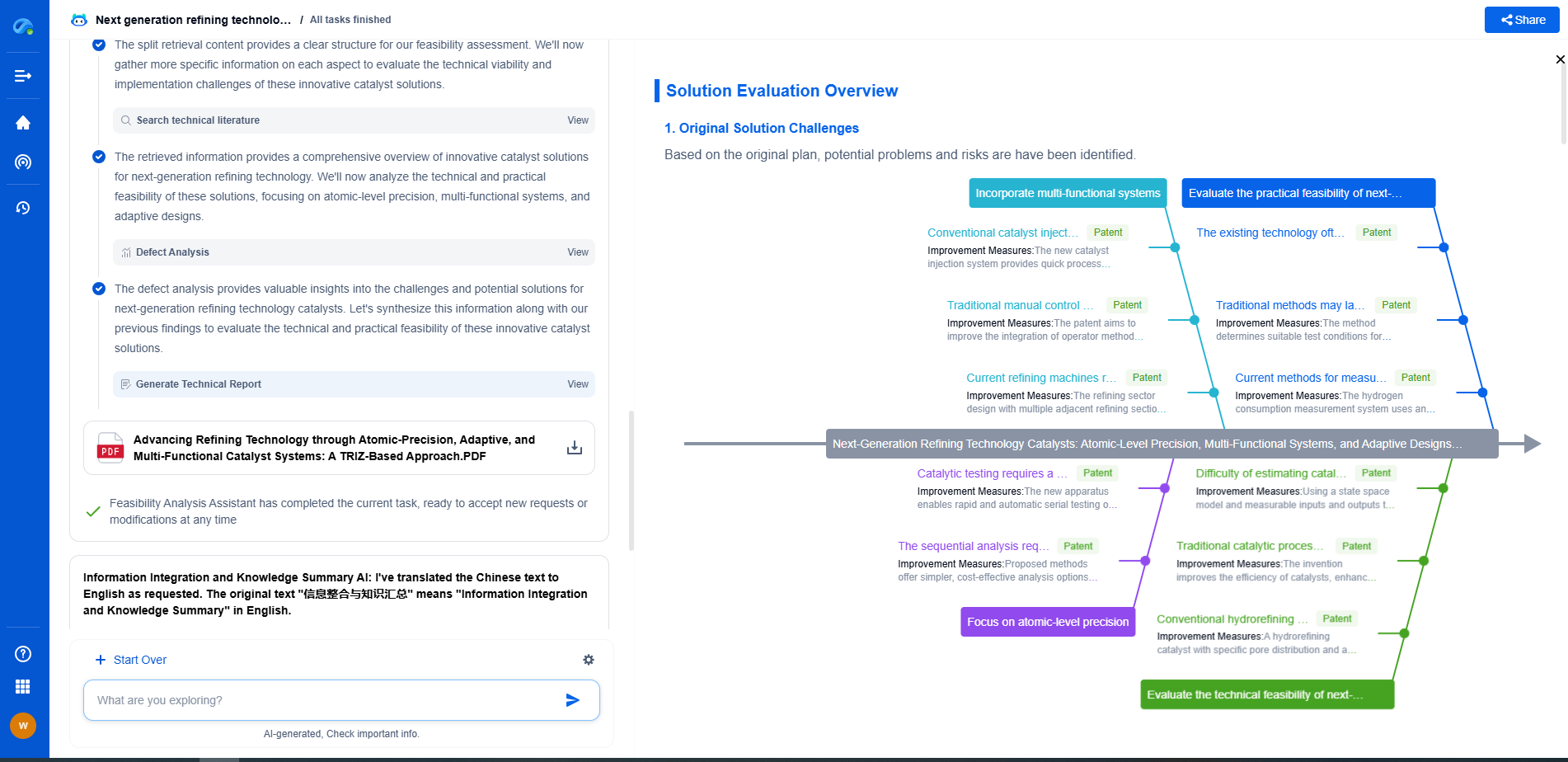Passive vs. Active Noise Mitigation Techniques: When to Use Each
JUL 16, 2025 |
Noise mitigation is an essential aspect of creating comfortable environments, whether in public spaces, workplaces, or homes. With the increasing demand for quieter environments due to urbanization, technological advancements, and heightened awareness of mental health, understanding the differences between passive and active noise mitigation techniques becomes crucial. Both approaches have their strengths and limitations, and knowing when to use each can significantly enhance the efficacy of noise control efforts.
Passive Noise Mitigation Techniques
Passive noise mitigation involves using materials and design elements to block or absorb sound waves without relying on any electronic equipment. These techniques focus on preventing sound from entering or escaping a particular space by using barriers and absorptive materials. Here are some key passive noise mitigation methods:
1. **Soundproofing Materials**: These include specialized insulation, acoustic panels, and double-glazed windows. These materials are designed to block sound transmission by adding mass and density to walls, ceilings, and floors.
2. **Structural Design**: Effective architectural design can play a significant role in passive noise control. Building layouts can be optimized, and walls can be angled to reflect sound away from listener areas.
3. **Barriers and Enclosures**: Physical barriers such as walls, fences, and enclosures can be employed to reduce noise from external sources like traffic or industrial activities.
4. **Landscaping**: Trees and shrubs can serve as natural sound barriers, helping to reduce noise pollution from outside sources.
Passive techniques are highly effective in situations where continuous noise reduction is needed without maintenance or energy consumption. They are especially suited for structural applications in buildings, industrial settings, and residential areas.
Active Noise Mitigation Techniques
Active noise mitigation, on the other hand, utilizes technology to counteract unwanted sound waves. This approach typically involves the use of electronic devices to cancel out noise. Key active noise mitigation methods include:
1. **Noise-Canceling Headphones**: These employ microphones to detect ambient noise, and then generate sound waves that are the exact opposite (antiphase) to cancel it out.
2. **Active Noise Control Systems**: These systems use speakers and microphones installed in a space to create sound waves that counteract unwanted noise. They are frequently used in vehicles and industrial settings.
3. **Vibration Control**: Active techniques can also be used to reduce structural noise by controlling vibrations through dynamic dampers.
Active noise mitigation is particularly useful in environments where passive techniques are insufficient or impractical. They are ideal for personal devices, complex machinery, and areas with fluctuating noise levels.
When to Use Passive Techniques
Passive noise mitigation is most suitable in scenarios where long-term noise control is required without ongoing energy consumption. It's excellent for areas where structural changes can be made or in settings where noise sources are relatively constant and predictable. For example, passive techniques are ideal for office buildings, homes, or industrial sites with continuous noise exposure.
When to Use Active Techniques
Active noise mitigation shines in dynamic environments where noise sources are unpredictable or constantly changing. It is beneficial in settings where space constraints limit the use of bulky passive materials, or where personal comfort is a priority, such as in aviation, automotive, and consumer electronics industries. Moreover, active techniques are preferable in situations where it's impossible to block sound physically, like in open spaces or when dealing with low-frequency noises.
Combining Both Techniques
In many cases, the best approach might be a combination of passive and active noise mitigation techniques. For instance, a high-tech office space might employ passive soundproofing materials to reduce general ambient noise, while using active noise-canceling systems for specific areas or devices. Combining both strategies can provide more comprehensive noise control, ensuring a better acoustic environment.
Conclusion
Choosing between passive and active noise mitigation techniques depends on various factors, including the nature of the noise, the environment, and specific needs. Understanding the strengths and limitations of each approach helps in making informed decisions to create quieter and more comfortable spaces. By carefully considering the context and requirements, one can effectively implement noise mitigation strategies that enhance productivity, well-being, and overall quality of life.
In the world of vibration damping, structural health monitoring, and acoustic noise suppression, staying ahead requires more than intuition—it demands constant awareness of material innovations, sensor architectures, and IP trends across mechanical, automotive, aerospace, and building acoustics.
Patsnap Eureka, our intelligent AI assistant built for R&D professionals in high-tech sectors, empowers you with real-time expert-level analysis, technology roadmap exploration, and strategic mapping of core patents—all within a seamless, user-friendly interface.
⚙️ Bring Eureka into your vibration intelligence workflow—and reduce guesswork in your R&D pipeline. Start your free experience today.
- R&D
- Intellectual Property
- Life Sciences
- Materials
- Tech Scout
- Unparalleled Data Quality
- Higher Quality Content
- 60% Fewer Hallucinations
Browse by: Latest US Patents, China's latest patents, Technical Efficacy Thesaurus, Application Domain, Technology Topic, Popular Technical Reports.
© 2025 PatSnap. All rights reserved.Legal|Privacy policy|Modern Slavery Act Transparency Statement|Sitemap|About US| Contact US: help@patsnap.com

